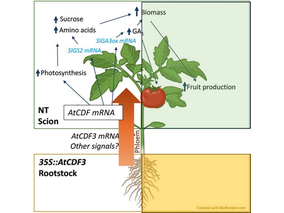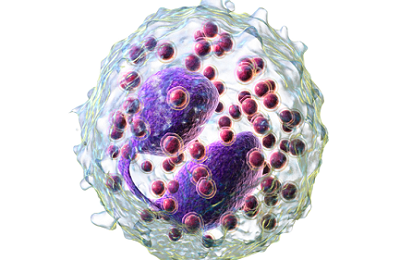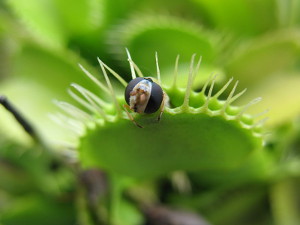The study was conducted in Dionaea muscipula, or Venus flytrap, a carnivorous plant that uses sensor hairs on the capture leaf surface to detect prey. According to the authors, the plant is able to count how many times these hairs are touched by an insect to decide whether it is worth catching and digesting.
A single contact with the sensor hair is not enough to close the trap (it could be a false alarm), but acts as an alert. If there is a second contact in less than 30 seconds, the capture organ will close on the prey.
While struggling to escape, the insect touches the sensor hairs repeatedly. This leads to sealing of the trap to form what the authors call the "green stomach".
"After the second contact, the plant begins to release jasmonate, a hormone produced by many plants in response to touch," explains Roberto Solano, CNB researcher and one of the authors. Jasmonate stimulates the production of enzymes to digest the prey and, at the same time, the plant begins to express transporters to capture the nutrients released by digestion.
From this point on, the more contacts, the more digestive enzymes will be released. In this way, the plant can assess the cost-benefit of its prey and ensure that it wins.

The research team observed changes in head circumf...

AtCDF3 gene induced greater production of sugars a...

Un estudio con datos de los últimos 35 años, ind...

En nuestro post hablamos sobre este interesante tipo de célula del...

Investigadores del Cima y de la Clínica Universidad de Navarra confir...
Biotechnology portal in Spain
Subscribe to our newsletter and stay up to date with the latest news and deals!
2013 © Biotech-Spain.com - Site Developments SL. All Rights Reserved. Terms of Service | Privacy Policy
Articles
Directory
